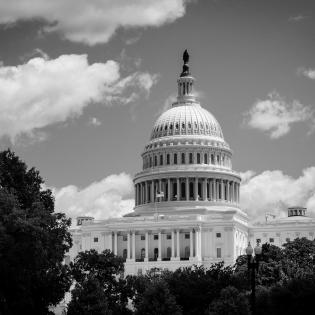Building the Foundation
In a kid-friendly approach, we look at the components of the U.S. Constitution and put early government-forming events in a context. We distinguish the roles of the three branches of government, especially the structure and responsibilities of our judicial system.
- Describe the roles of the three branches of government.
- Practice the conflict-resolution process.
- read-aloud copy of the picture book, We, the Kids: The Preamble to the Constitution of the United States by David Catrow
- copies of handouts, based on what you choose to complete
In conversation with family members complete the worksheet Which Court? with the accompanying handout defining the different courts (also available in Spanish).
- Catrow, David. We, the Kids: The Preamble to the Constitution of the United States. Dial Books for Young Readers, 2002. ISBN: 0803725531
- Ohio Commission on Conflict Resolution
Instructions
Anticipatory Set:
To spark thinking about the Constitution and determine what kids already know, they complete the handout, US Constitution: An Anticipation Guide.
Set the stage for the discussion of the Constitution by reading aloud and discussing the book We the Kids: The Preamble to the Constitution of the United States. This book uses the exact words of the Preamble to the Constitution (the purpose of the Constitution) with fun pictures that interpret the words in the setting of children going on a camping trip.
Review the answers to the Anticipation Guide and give an overview of the Constitution.
Components include the Declaration of Independence, the original Constitution, the Bill of Rights, and subsequent Amendments.
The Constitution describes the three branches of government, which balance power to make sure no one gets too powerful (like a king or dictator). Article I describes the Legislative branch (Congress makes laws). Article II describes the Executive branch (president enforces the laws). Article III describes the Judicial branch (courts interpret laws).
The entire Constitution is online for getting a overhead view of the components and purposes and timeline of writing and decisions.
- The National Constitution Center: https://constitutioncenter.org/interactive-constitution/the-constitution
- The National Archives: https://www.archives.gov/founding-docs/constitution-transcript
The Constitutional Convention involved people with different ideas coming together to determine a structure for a new government. The result was the document we just previewed. Discuss how that might be similar to determining group rules and structures of peer mediation.
Working in small groups, read sections of the handouts How to Settle Differences, Creating a Democratic Classroom Environment, S.O.S. Steps to Resolve a Conflict. Each group reads and discusses their assigned pages. They prepare a one-minute summary of what they read to teach it to the other groups.
After listening to each group, they brainstorm the benefits of group cooperation and list the conflict resolution strategies that may work for their group.
Relate the judicial branch of our government to conflict mediation. Read aloud the example that relates a familiar situation to an appeals court (see handout Judicial System Student Analogy).
Explain that this is very much like what our court system does every day. People bring their conflicts or problems to a judge and sometimes a jury for a solution. In a trial court the judge and sometimes a jury listens to witnesses and examines evidence, and then makes a decision. If either party is unhappy with this decision and believes there is an error of law, they can ask a court with higher authority to review the decision. This is called an appeal.
Pass out copies of the handouts Two Types of Courts and Which Court? They will bring this home to work on with their families. The answers are on the handout Answers: Which Court?
Optional Application: Ask participants to propose a common conflict between their peers, such as what game rules to use in a playground game. Working in small groups of 4-6, they propose a way to resolve that conflict following a conflict resolution strategy from the handout. They report back to the whole class.
Philanthropy Framework
-
Strand PHIL.I Definitions of Philanthropy
-
Standard DP 01. Define Philanthropy
-
Benchmark E.3 Recognize that citizens have a responsibility for the common good as defined by democratic principles.
-
-
-
Strand PHIL.II Philanthropy and Civil Society
-
Standard PCS 01. Self, citizenship, and society
-
Benchmark E.3 Describe a benefit of group cooperation.
-
-
Standard PCS 02. Diverse Cultures
-
Benchmark E.4 Demonstrate listening skills.
-
Benchmark E.5 Identify the relationship between individual rights and community responsibility.
-
-
Standard PCS 05. Philanthropy and Government
-
Benchmark E.14 Describe the roles of citizens in government.
-
-
Standard PCS 07. Skills of Civic Engagement
-
Benchmark E.3 Participate in acts of democratic citizenship in the classroom or school, such as voting, group problem solving, classroom governance or elections.
-
Benchmark E.4 Analyze information to differentiate fact from opinion based on the investigation of issues related to the common good.
-
-
